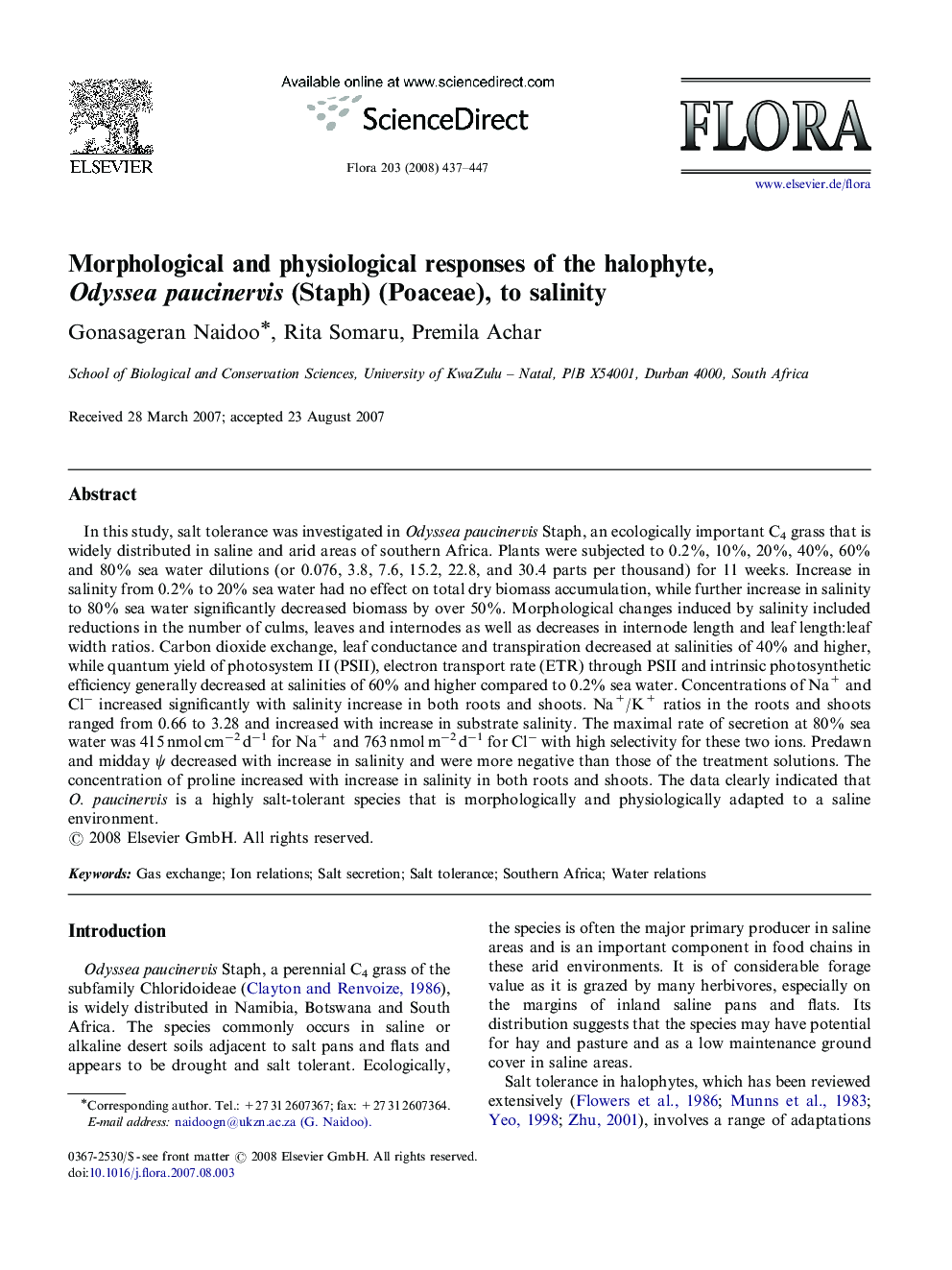| کد مقاله | کد نشریه | سال انتشار | مقاله انگلیسی | نسخه تمام متن |
|---|---|---|---|---|
| 2180166 | 1095114 | 2008 | 11 صفحه PDF | دانلود رایگان |

In this study, salt tolerance was investigated in Odyssea paucinervis Staph, an ecologically important C4 grass that is widely distributed in saline and arid areas of southern Africa. Plants were subjected to 0.2%, 10%, 20%, 40%, 60% and 80% sea water dilutions (or 0.076, 3.8, 7.6, 15.2, 22.8, and 30.4 parts per thousand) for 11 weeks. Increase in salinity from 0.2% to 20% sea water had no effect on total dry biomass accumulation, while further increase in salinity to 80% sea water significantly decreased biomass by over 50%. Morphological changes induced by salinity included reductions in the number of culms, leaves and internodes as well as decreases in internode length and leaf length:leaf width ratios. Carbon dioxide exchange, leaf conductance and transpiration decreased at salinities of 40% and higher, while quantum yield of photosystem II (PSII), electron transport rate (ETR) through PSII and intrinsic photosynthetic efficiency generally decreased at salinities of 60% and higher compared to 0.2% sea water. Concentrations of Na+ and Cl− increased significantly with salinity increase in both roots and shoots. Na+/K+ ratios in the roots and shoots ranged from 0.66 to 3.28 and increased with increase in substrate salinity. The maximal rate of secretion at 80% sea water was 415 nmol cm−2 d−1 for Na+ and 763 nmol m−2 d−1 for Cl− with high selectivity for these two ions. Predawn and midday ψ decreased with increase in salinity and were more negative than those of the treatment solutions. The concentration of proline increased with increase in salinity in both roots and shoots. The data clearly indicated that O. paucinervis is a highly salt-tolerant species that is morphologically and physiologically adapted to a saline environment.
Journal: Flora - Morphology, Distribution, Functional Ecology of Plants - Volume 203, Issue 5, 1 July 2008, Pages 437–447